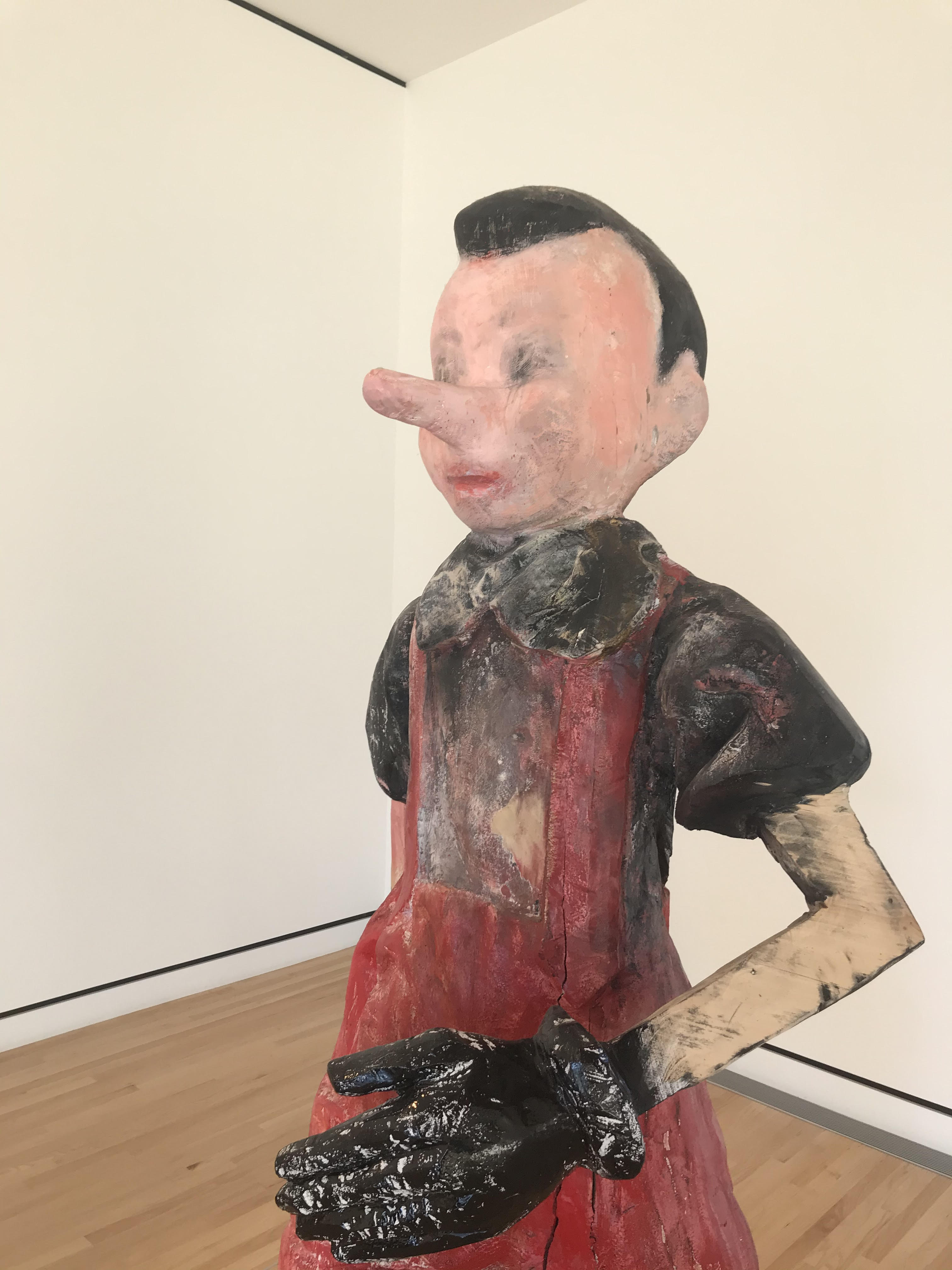
Artist Jim Dine created the work shown here in 2006 in preparation for a commission to develop a 30 foot tall bronze sculpture of Pinocchio for the town of Boras, Sweden. This wood study, entitled Walking to Boras, is kept at the Crystal Bridges Museum of American Art in Bentonville, Arkansas. Dine became fascinated by Italian author Carlos Collodi’s story of a wooden puppet that comes to life after he saw the Walt Disney movie as a young child. As an adult Dine saw this magical transformation as a metaphor for
art’s potential and the relationship between artists and the materials they manipulate.
However, the story’s most well-known and powerful message involves the human condition, the development of one’s character and most dramatically telling the truth. When the Magical Fairy awakens the puppet and gives him the gift of life she says that only Pinocchio has the ability to make his creator’s dream come true. To become a real boy Pinocchio would have to prove himself brave, truthful and unselfish. For those who are familiar with the story, the drama reaches a climax when after every lie Pinocchio’s nose grows. Later the Magical Fairy explains, “A lie keeps growing and growing until it is as plain as the nose on your face.”
Collodi wrote The Adventures of Pinocchio as a series of stories that were later consolidated into a single book in 1883. Since that time the book has been translated into more than 300 languages and has been available to the public continuously and without interruption. It is the most widely translated non-religious book in history.
This canonical piece of literature has had an untold impact on world culture and in the eyes of many remains one of the greatest works of Italian literature. The work shown here is not the first art piece that has been made depicting Pinocchio. Previous works include a large sculpture placed in the Italian town of Pescia’s Parco di Pinocchio (Park of Pinocchio), constructed in 1956.
I am rarely drawn to work that intentionally lacks originality but rather appropriates the work of others to achieve its power. In this case it’s a copy of a copy — taken from the Disney adaptation of Collodi’s original story. Regardless, this piece grabbed hold of me. It was like a marker that exposed the dramatic shift society has made over my life time. This work marks a transition into what some are calling a post-truth culture. It would be naive to suggest that during one moment in history people were more truthful than another, but this piece can be used to gauge our collective aspiration to tell the truth – our quest to become real.
